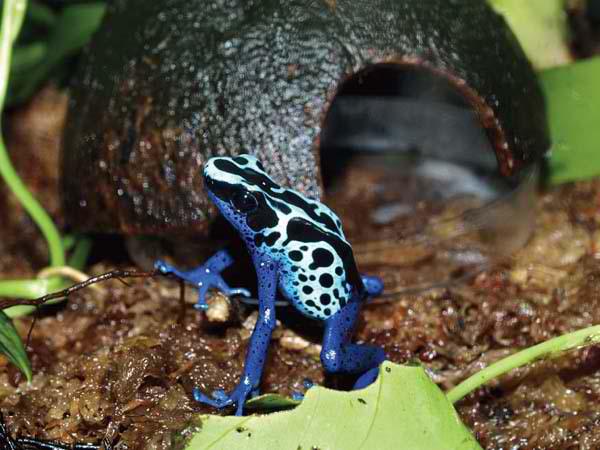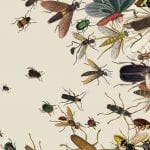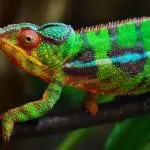Poison frogs are among the most beautiful herps to keep. If you have planned to take care of one, then you have to know its special housing needs. Poison frogs are so small, but that does not mean they don’t demand some things.
Providing them a comfortable and pleasing place to stay for the rest of their lives is very important. If you are serious about keeping poison frogs, then please read on. Follow these steps to create the best terrarium for poison frogs.
Choose the Ideal Enclosure
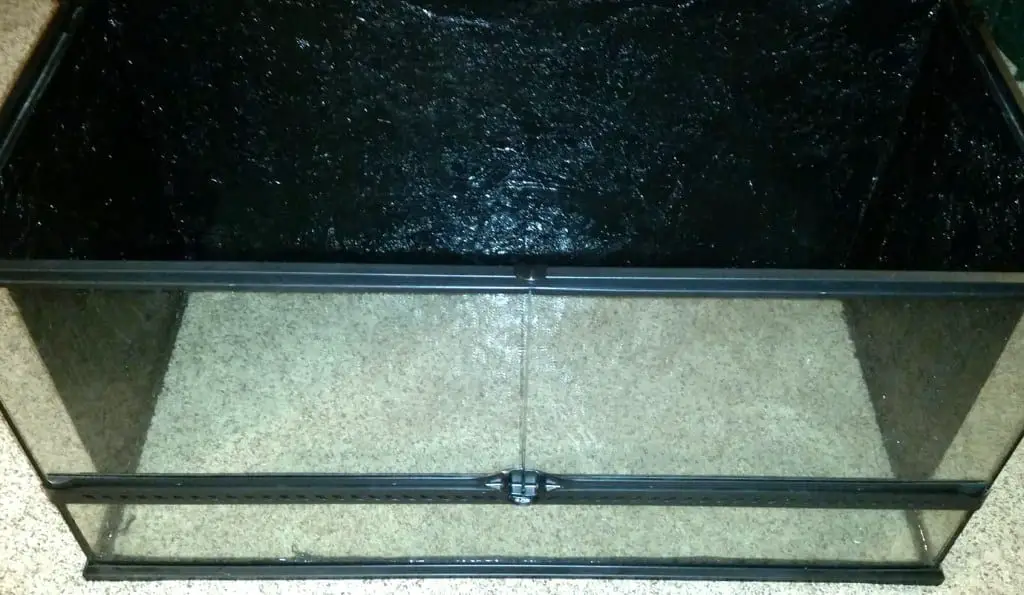
Begin with the enclosure. The bottom half of it must be waterproof. At the same time, it should provide ample space for the frogs. A regular aquarium will be fine, but a hinged glass cover would be great. Screen tops give excess ventilation, while aquarium hoods have spaces where the frogs can pass through and escape.
Look for an enclosure that has been made for amphibians or reptiles. They are much better and secure than the standard aquariums. Choose the one with a front door for easy access and maintenance.
Don’t use an enclosure that offers more ventilation as it can make humidity levels high, which is crucial for tropical plants and frogs. Though the 10-gallon terrarium can offer enough space for more poison frogs, an enclosure of this size will give you less space for landscaping and planting. If it is your first time to make a terrarium, opt to a 20-gallon terrarium or something bigger than this.
A 20-gallon terrarium will allow you to be creative. The available space is just enough, as the terrarium is not so large. It may accommodate 2 to 6 frogs depending on the official tank layout and your preferred species. Wipe the enclosure with a wet paper towel before you put anything in it.
Add Lighting
Poison frogs don’t need special lighting. However, the lighting can affect both the terrarium’s appearance and the plants. You can use a pair of standard T12, or T8 fluorescent bulbs that can produce enough amount of light for the entire enclosure will be okay. However, using something more powerful is better to promote plant growth. Though it can be more expensive than the regular fluorescent lights, compact fluorescents and output T5 fluorescents are still worth considering.
Whatever kind of lighting you prefer, pay attention to the bulb’s color temperature. Those bulbs that are about 5,500 Kelvin will produce an amount of light that matches the rays of the noontime sun. Grow light bulbs are not ideal as they tint the enclosure with the unnatural shade of red or purple, but this can be also due to other bulbs. Plug the lights into the electric timer set to give light to the enclosure for 10-12 hours daily.
Form the Background
This is a very crucial element of terrarium design. By attaching materials that the plants may grow on the sides and back of the enclosure, you’re adding another dimension to the enclosure.
There are many kinds of backgrounds that you can use. One is the cork bark that is so affordable and produced by a renewable source. Epiphytic plants grow on this. You can also use raw cork bark flats, but make sure there are no gaps left unfilled. Other suitable options are the tree-fern panels and adaptable coco-fiber sheets.
Use an aquarium-safe silicone sealant in affixing backgrounds to the glass. In doing this, stand first the terrarium on its back. The surface where you want to attach the background must be level and closer to the ground. Then, apply coats silicone sealant to the glass. Press the background placed on top of the sealant and leave it for at least 4 days to dry completely.
Consider the Plumbing
When the background is secured, and the enclosure doesn’t smell like the silicone sealant anymore, you may now add a drainage substrate. The primary base layer will allow the excess water to accumulate under the planting mix. Therefore, it does not become waterlogged.
You can use LECA or lighter expanded clay aggregate as a drainage substrate. You can get these clay pebbles from a terrarium or hydroponic supply dealer. LECA is good to use because it’s lighter compared to gravel. You can use a kitchen strainer or anything similar. Wash LECA before using it to eliminate any fine particles like dust.
In making water removal easy, just leave one side of the enclosure bare. Use river stones, cork bark, or tree-fern slabs for holding back the LECA. Put a slim sheet of gravel or the freshwater aquarium sand on the bare glass to enhance the appearance. This part of the enclosure will eventually become a tiny pond as the water is accumulating inside the enclosure. You can drain the water with ease whenever necessary.
Put the Substrate
Don’t use potting soil or topsoil as they can easily break down in humid environments. They also contain materials or chemicals that can harm the poison frogs. You may buy special substrates made for terrarium from some pet shops, or you can also make your mixture.
Before putting the substrate to the enclosure, you must mix in the water until the substrate maintains its form when you squeeze it with your hand. Place it in a garbage bag or bucket and allow it to absorb the water completely. Then, you put 2-3 inches of the mix all over the terrarium. You may sculpt the substrate to create gentle slopes or hills. These things would level off over time if you failed to give them support.
Consider putting a sheet of leaf litter above the substrate. The leaf litter will enhance further the overall appearance of your terrarium. It also gives hide spots for your pets and helps in supporting the beneficial microorganisms as the leaf litter decomposes.
You can use live magnolia or oak leaves work well, but allow them to air-dry thoroughly before using to prevent introducing pathogens or pests. Ensure that they’re collected from the pesticide-free spot.
Decorate the Terrarium
When the drainage layer and the substrate are already in their positions, it’s time to focus on the decoration. Begin with the main wood structure. Putting pieces of cork tubes or driftwood at the best angle can be difficult and time-consuming, but the result is priceless. The woods to use in the poison frogs are bulky driftwoods – the most commonly used in the planted aquaria.
Cork bark is useful. Cork tubes could be split open down the sides, full of sphagnum moss or orchid bark, and planted to resemble the thick fallen log. In the small to average-sized terrarium, you will find it looking more natural to use just one kind of wood. Don’t use grapevine, grape wood, or cholla wood. They aren’t ideal for high-humidity settings.
Also, don’t use wood collected outdoors except when you’re positive of its kind. It is safe to use with the poison frogs. Vines, rocks, jungle pods, rocks, and other cage items could be added after the main wood structure is in place. Be sure, however, that the terrarium will not look too crowded with those items.
Plants fill in the vacant space as you grow. So, it is best to add them in the end when required. At times, one driftwood structure planted with good-looking epiphytic plants will be enough to get your desired look.
Add Chlorophyll
The terrarium of poison frogs is incomplete without the live plants. Wash the plants carefully before use. If you think you’ve left them exposed to leaf shiners, pesticides, and other detrimental chemicals, grow the plants out of the terrarium for 5 weeks or more after washing them. This will allow the chemicals to dissipate completely.
Introduce the Poison Frogs
You will find a wide variety of poison frogs offered for sale on the web and even in the local pet stores near you. Introduce big juveniles or mature adults to the terrarium.
Maintain and Uphold Your Creation
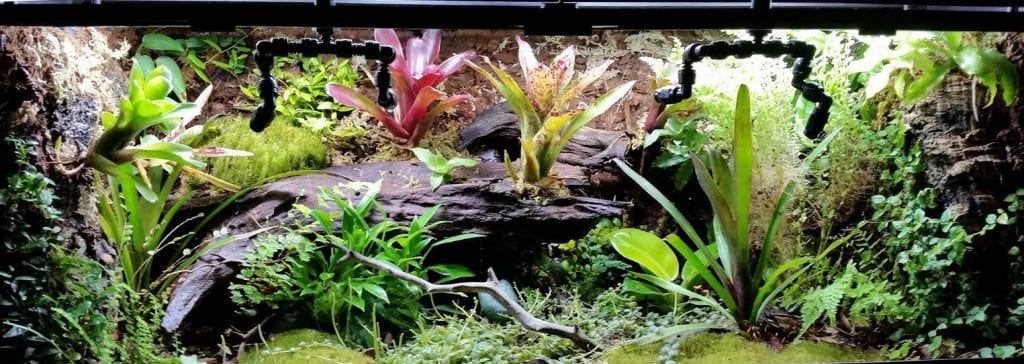
Though they are easy to care for, terrariums will still need some sort of maintenance. Mist the terrarium with water every day or alternately. You can use reverse-osmosis or distilled water to sustain good plant health and prevent watermarks on the glass. Spray dead insects, feces, and other waste products of the cage items down to the substrate underneath where the beneficial microorganisms are.
To keep the terrarium’s interior visible enough, clean the inner and outer side of the glass every week. Wipe them with a wet towel. Use a razor blade for scraping the algae and film of the glass. Every year, you may replace the light bulbs to keep proper lighting all over the terrarium. New light bulbs offer more lighting than the older ones. With ample lighting, the plants inside will grow fast, so pruning is required once or twice a month. You will also need to draw off water from the draining layer as it reaches the substrate.
Conclusion
A well-designed terrarium for poison frogs is a great way to keep these beautiful creatures healthy and happy. There are many ways to design a terrarium, so give enough time to plan everything and research further to find more ways to design a terrarium. Good luck!

